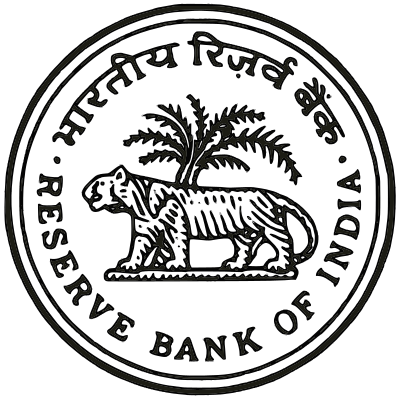Welcome to Daily Banking Digest, your premier source for the latest news and insights on May 17, 2024, focusing on banking, the economy, and finance. Our platform offers a comprehensive overview of the day’s most critical financial stories, market trends, and economic developments. Whether you’re a professional in the financial sector, an investor monitoring market movement, or someone interested in staying informed about the economic landscape, Daily Banking Digest provides reliable, up-to-date information.
Join our Telegram Channel for Daily PDF in your Inbox – Click Here
Table of Contents
Zoho’s Sridhar Vembu Plans Semiconductor Venture with $700 Million Investment
Zoho, a Chennai/US-based software company, is reportedly planning to invest $700 million in the chip-making industry. The company has approached the Central Government for incentives and has identified a potential partner for the venture. This move aligns with India’s ambitious plan to become a major hub for semiconductors.

Key Points:
Zoho’s Chip-Making Venture: – Zoho plans to invest $700 million in the chip-making business. – The company has approached the Central Government for incentives. – Zoho has identified a potential partner for the venture.
India’s Semiconductor Ambitions: – India aims to become a major hub for semiconductors. – The Tata Group has already taken the lead in this sector. – Other companies, including Vedanta, are also planning to enter the semiconductor industry.
Zoho’s Software Business: – Zoho offers software and related services on a subscription basis. – It competes with global giants like Microsoft and Salesforce.
Vembu’s Interest in Semiconductors: – Zoho CEO Sridhar Vembu has expressed interest in semiconductors. – He plans to set up a semiconductor design project in rural Tenkasi, Tamil Nadu.
Ananthan Ayyasamy’s Expertise: – Ananthan Ayyasamy, a former Intel employee, is a semiconductor expert. – He is involved in Vembu’s semiconductor design project in Tenkasi.
Finance Ministry Engages with NBFC Executives to Address Industry Concerns
The Finance Ministry held consultations with top NBFC executives to discuss challenges and implications for the financial system. Key topics included bank funding, co-lending arrangements, governance concerns, data privacy, and lending rates.

Key Points:
Bank Funding to NBFCs: – Discussions centered around bank funding to NBFCs and its impact on the financial system.
Co-lending Arrangements: – The meeting explored co-lending arrangements between banks and NBFCs and their potential benefits.
Governance Concerns: – The government expressed concerns over governance in NBFCs and the potential for contagion to banks.
Data Privacy and Cybercrimes: – Data privacy and cybercrimes in the NBFC sector were discussed as emerging challenges.
Lending Rates and Business Practices: – The meeting addressed issues related to lending rates and business practices of NBFCs.
Industry Presentations: – Presentations were made by the Finance Industry Development Council (FIDC) and the Microfinance Institutions Network (MFIN).
Attendance: – The meeting was chaired by DFS Secretary Vivek Joshi and attended by SBI Chairman Dinesh Kumar Khara, NBFC executives, and industry representatives.
RBI Draft Guidelines: – Discussions briefly touched upon the RBI’s recent draft guidelines on project financing, with NBFCs expected to submit their views by June 15.
Challenges Faced by NBFCs: – The meeting acknowledged challenges faced by NBFCs, including asset quality concerns, liquidity crunch, and regulatory compliance.
RBI Mulls Sub-Target for Export Credit within Priority Sector Lending
The Reserve Bank of India (RBI) is considering a proposal to create a sub-target for export credit within the existing priority sector lending (PSL) target to address the cash crunch faced by exporters due to disruptions caused by the Red Sea crisis. The Federation of Indian Export Organisations (FIEO) has suggested allocating 5-6% of PSL to the export sector, similar to the sub-target for MSMEs. Exporters also request an increase in the rate of interest subvention under the interest equalization scheme to provide competitive interest rates.

Key Points:
Credit Crunch: – Exporters face a cash crunch due to longer shipping times and payment delays caused by the Red Sea crisis. – This requires additional credit at competitive rates for a longer period.
PSL Sub-Target: – FIEO proposes a 5-6% sub-target for export credit within the 40% PSL target. – This would ensure improved credit flow to the export sector.
Rate Subvention: – Exporters request an increase in the rate of interest subvention under the interest equalization scheme. – This would provide competitive interest rates to exporters.
Decision-Making: – The final decision on the sub-target and rate subvention rests with the Finance Ministry and RBI.
Indian Exporters Anticipate Benefits from US-China Trade Dispute
Indian exporters anticipate opportunities from the US tariffs on Chinese imports, as they could fill the supply gap. However, they caution against potential dumping from China and urge the government to monitor imports closely.
Key Points:
US Tariffs on China: – US President Biden imposed tariffs on $18 billion worth of Chinese imports, including steel, aluminum, and medical products. – China is expected to retaliate with tariffs on US products.
Opportunities for Indian Exporters: – India has opportunities to fill the supply gap created by the tariffs, particularly in facemasks, PPE, syringes, medical gloves, aluminum, and iron & steel. – If China retaliates, Indian exporters may also have opportunities in the Chinese market, subject to market access.
Threat of Dumping from China: – China has overcapacity in many sectors, raising concerns about potential dumping. – The Indian government and industry are urged to monitor imports closely and take appropriate action if dumping occurs.
PB Fintech Executives to Divest 1.86% Stake Valued at ₹1,053 Crore
Two top executives of PB Fintech, Yashish Dahiya and Alok Bansal, plan to sell a combined 1.86% stake in the company through block deals for ₹1,053 crore. The shares will be sold at a 6% discount to the closing price on Thursday, with a floor price of ₹1,258 per share.
Key Points:
- Stake Sale: Dahiya will sell 54 lakh shares and Bansal will sell 29.7 lakh shares, representing 1.86% of PB Fintech’s equity.
- Shareholding: As of March 2024, Dahiya held 4.63% stake and Bansal held 1.67% stake in the company.
- Positions: Bansal is Vice-Chairman and Whole-Time Director, while Dahiya is Chairman, Executive Director, and CEO.
- Parent Company: PB Fintech is the parent entity of Policybazaar, an online insurance aggregator.
- Book Runner: Morgan Stanley India is the book runner for the deal.
Indian Exports Projected to Surpass USD 500 Billion with 12-15% Growth
India’s merchandise exports are projected to reach USD 500 billion by the end of FY25, a significant increase from the USD 437 billion recorded in 2023-24. Services exports are also expected to reach USD 390-400 billion this fiscal. Traditional markets such as the US and Europe are anticipated to contribute to this export growth.
Key Points:
- Merchandise Exports:
- Expected to increase by USD 60-70 billion to USD 500 billion by FY25.
- Services Exports:
- Projected to reach USD 390-400 billion this fiscal.
- Traditional Markets:
- US and Europe will play a key role in boosting India’s exports.
Nikhil Kamath’s Love for Bengaluru: Why the Zerodha Co-Founder Prefers the City Over Mumbai
Nikhil Kamath, co-founder of Zerodha, praises Bengaluru as India’s startup capital, highlighting its exceptional people despite challenges like traffic. He emphasizes the city’s welcoming, down-to-earth, and talented population, which makes it an ideal hub for entrepreneurs. Kamath also shares his unconventional views on parenthood and legacy, prioritizing personal fulfillment over traditional expectations.
Key Points:
Bengaluru’s Exceptional People: – Kamath praises Bengaluru’s people as second to none, despite traffic and road conditions. – He highlights their love for the city, kindness, and welcoming nature.
Bengaluru’s Entrepreneurial Hub: – Kamath emphasizes Bengaluru’s abundant talent pool, making it an ideal location for startups. – He believes the access to talent at a reasonable cost is unmatched globally.
Bengaluru’s Appeal: – Kamath and other business leaders are actively involved in initiatives to enhance Bengaluru’s appeal. – They aim to make the city more vibrant and attractive, such as planting cherry blossom trees.
Kamath’s Unconventional Views on Parenthood: – Kamath shares his choice not to have children, citing concerns about dedicating a significant part of life to raising them. – He questions the traditional notion of legacy, advocating for a meaningful life focused on kindness and personal fulfillment.
Android Users Rejoice: Google’s New Scam Call Detection Feature Shields You from Fraud
Google I/O 2024 introduced a new AI-powered feature for Android devices that detects and alerts users of potential phone scams during calls. The feature, powered by Gemini Nano, operates locally on devices and protects user privacy.

Key Points:
Gemini Nano: – Streamlined version of Google’s large language model tailored for Android devices. – Operates locally and offline, ensuring privacy. – Scrutinizes conversations for fraudulent language and patterns.
Scam Call Detection: – Alerts users during calls if suspicious activity is detected. – Prompts users to terminate conversations if necessary. – Protects against scams involving sensitive information requests or urgent fund transfers.
Privacy: – All processing occurs on the user’s device. – Conversations monitored by Gemini Nano remain confidential.
Release: – Specific release date not yet announced. – Users must opt-in to utilize the feature.
Compatibility: – Currently supported on flagship models like Google Pixel 8 Pro and Samsung S24 series. – Potential expansion to more devices in the future.
Significance: – Addresses escalating challenges posed by scam activities. – Reflects Google’s commitment to enhancing user protection in the digital landscape. – Anticipates more AI-driven security measures and expanded functionalities of Gemini AI in the future.
NBFCs’ Lending Practices: RBI Raises Concerns About Potential Risks
The Reserve Bank of India (RBI) has cautioned non-bank finance companies (NBFCs) against over-reliance on algorithm-based credit models, emphasizing the need for ongoing scrutiny and validation of these systems. The RBI warns that excessive dependence on historical data or algorithms can lead to oversights and inaccuracies in credit assessment, especially in dynamic market conditions.
Key Points:
Overreliance on Algo-Based Credit Models: – NBFCs should avoid over-reliance on algo-based credit models. – Rule-based credit engines are only as effective as the data and criteria they are built upon. – Overreliance can lead to oversights and inaccuracies in credit assessment.
Importance of Vigilance and Validation: – NBFCs need to maintain a vigilant approach regarding their strengths and weaknesses. – Ongoing scrutiny and validation of credit scoring systems are crucial. – Supervised entities should regularly adjust rule engines and models based on real-time insights and evolving situations.
Periodic Validation: – Periodic validation, either internally or externally, is essential to ensure the continued relevance of these models. – Risk and Internal Audit heads should give special focus to this mandate.
Focus on Business Models: – Risk function leaders should focus on the business models being adopted to ensure their ongoing viability. – Periodic review of portfolio mix is important to mitigate potential accumulation of risks.
Unreasonably High Risk Thresholds: – Risk thresholds set for certain product categories or segments, such as unsecured lending, may be unreasonably high for long-term sustainability. – Risk managers should conduct a thorough evaluation of any potential risks accumulating in their portfolios.
RBI’s Earlier Warnings: – RBI Governor Shaktikanta Das had previously warned against ‘algorithm-based’ lending by banks. – Model-based, algorithm lending can “lead to a potential crisis.”
RBI’s Efforts to Curb Excessive Retail Lending: – The RBI is intensifying its efforts to curb “excessive enthusiasm” in retail lending. – Stricter regulations on high-risk lending practices have been implemented to enhance financial stability.
PhonePe Expands UPI Payments to Sri Lanka
PhonePe has partnered with LankaPay to launch PhonePeUPI payments in Sri Lanka, enabling Indian tourists to make seamless payments using UPI at LankaPay QR merchants. This collaboration aims to boost Indian tourism and support the local economy.

Key Points:
Partnership and Launch: – PhonePe has partnered with LankaPay to launch PhonePeUPI payments in Sri Lanka. – The launch event was attended by high-ranking officials from India and Sri Lanka.
Payment Process: – PhonePe users can scan LankaQR codes to make payments using UPI. – Transactions are facilitated by the UPI and LankaPay National Payment Network. – Payments are debited in Indian currency, with the exchange rate displayed.
Benefits for Indian Tourists: – Ease of making payments using a familiar digital system. – Encourages tourism from India.
Economic Impact: – Indian tourists have significantly contributed to Sri Lanka’s economy. – UPI payments are expected to further boost tourism and support the local economy.
Collaboration and Innovation: – Sri Lankan firms are encouraged to engage with Indian companies to build on the UPI stack for innovations in various sectors.
LIC Housing Finance Targets Moderate Loan Portfolio Expansion in FY25
LIC Housing Finance aims for “lower double digit” loan portfolio growth this fiscal, prioritizing affordable housing. Despite a 4.3% loan portfolio growth in FY23, the lender exercised caution in project loans due to past slippages. It plans to balance margin protection and growth, targeting 5-7% growth in project loans and expanding its presence in tier 3 towns for affordable housing.
Key Points:
Loan Portfolio Growth: – Targeting “lower double digit” loan portfolio growth this fiscal. – Loan portfolio expanded by 4.3% to Rs 2.87 lakh crore in FY23.
Project Loans: – Outstanding project loans dropped by 32% to Rs 8036 crore in FY23. – Cautious approach in lending to high-risk project loan segment.
Loan Disbursement: – Total annual loan disbursement decreased by 8% to Rs 58937 crore in FY23. – Some large builders shifted to other lenders for lower interest rates.
Net Interest Margins: – Net interest margins improved to 3.15% in Q4 FY23 from 2.93% in Q4 FY22. – Full-year net interest margins rose to 3.08% from 2.41% in FY22.
Affordable Housing Focus: – Targeting affordable housing segment with increased focus. – Opened 46 offices in tier 3 towns to cater to affordable housing borrowers.
Public Sector Banks (PSBs) show slower loan growth compared to industry peers; adopting a cautious strategy to safeguard margins
The loan growth of large public sector banks in FY 2024, with most banks lagging behind the sector trend. State Bank of India (SBI) was the only exception with loan growth over 15%. The pressure on net interest margins and margin compression were cited as reasons for cautious lending by these banks. The share of external benchmark linked loans (EBLR) in total outstanding floating rate loans increased, with most banks using the repo rate as the external benchmark. Large private sector banks reported loan growth of over 16%, while public sector banks faced constraints due to slower deposit accretion.
Keypoints
- **Loan growth of large public sector banks in FY 2024 lagged behind the sector trend, with most banks showing growth in the range of 11-13%.
- **State Bank of India (SBI) was the only public sector lender with loan growth exceeding 15%.
- **Pressure on net interest margins and margin compression were reasons for cautious lending by large public sector banks.
- **The share of external benchmark linked loans (EBLR) in total outstanding floating rate loans increased to 56.2% by end-December 2023.
- **Most banks used the repo rate as the external benchmark for loans.
- **Large private sector banks reported loan growth upward of 16% in FY 2024.
- **Public sector banks faced constraints in growing their loan book due to slower deposit accretion, despite the banking sector witnessing a deposit growth of 12.9%.
DP World: Tamil Nadu Ranks Among Top States in India for Economic Zones
DP World has started operations at its largest free trade warehouse zone in Chennai, Tamil Nadu, which is the company’s second FTWZ in India. The Chennai facility offers strategic advantages due to its connectivity to various regions via the sea route. Tamil Nadu is considered one of the best states for an economic zone, and DP World’s Chennai economic zone is already showing promising occupancy rates within six months.
Key Points:
1. DP World’s Operations: DP World has commenced operations at its largest free trade warehouse zone in Chennai, Tamil Nadu.
2. Strategic Advantages: Chennai’s location offers strategic advantages as it is connected to South Asia, Africa, and Australia via the sea route.
3. Occupancy Rate: The Chennai economic zone has achieved 15% occupancy within six months of starting business.
4. Expansion Potential: The Chennai economic zone spans 6 lakh sq ft with a potential to grow to 2 million sq ft.
5. Industrialised State: Tamil Nadu has been one of the most industrialised states in India for the past few decades.
6. Integrated Chennai Business Park (ICBP): DP World’s economic zone in Chennai is located within a 40-km radius of key ports, facilitating cargo transportation.
7. Other Economic Zones: DP World has economic zones in Chennai, Mumbai, and Cochin, catering to various sectors.
8. Free Trade Warehousing Zones: Economic zones in India, also known as FTWZs, provide a hassle-free environment for handling goods and cater to multiple sectors.
RBI buys back Rs 2,069 cr in bonds, falls short of Rs 60,000 cr target
The Reserve Bank of India (RBI) repurchased Rs 2,069 crore worth of government bonds on Thursday, against the notified amount of Rs 60,000 crore, as banks refused to sell the securities at a loss. The securities scheduled for buyback were 6.18 per cent 2024, 9.15 per cent Government Securities (GS) 2024, and 6.89 per cent GS 2025. Despite receiving offers totalling Rs 26,877.161 crore for the 6.18 per cent GS securities, the RBI accepted only six bids amounting to Rs 552.999 crore at a cut-off price of Rs 99.61. Similarly, for the 9.15 per cent GS, it accepted two bids worth Rs 1,513 crore out of 12 offers totalling Rs 6,479.791 crore, at a cut-off price of Rs 100.98. Only one bid worth Rs 4 crore was accepted for the 6.89 per cent GS 2025 out of 27 offers worth Rs 7,238.497 crore, at a cut-off price of Rs 99.86. This buyback follows a previous auction on May 9, where the RBI bought back securities worth Rs 10,512.993 crore, significantly less than the announced amount of Rs 40,000 crore.

Keypoints
- RBI repurchased Rs 2,069 crore worth of government bonds against the notified amount of Rs 60,000 crore.
- The securities scheduled for buyback were 6.18 per cent 2024, 9.15 per cent Government Securities (GS) 2024, and 6.89 per cent GS 2025.
- Despite receiving offers totalling Rs 26,877.161 crore for the 6.18 per cent GS securities, the RBI accepted only six bids amounting to Rs 552.999 crore at a cut-off price of Rs 99.61.
- The RBI accepted bids only at Financial Benchmarks India Private Limited (FBIL) levels during the buyback auction.
- Market participants mentioned that if the RBI conducts more buybacks, banks will demand fair prices for the bonds as these bonds were bought at much higher prices.
UN upgrades India’s 2024 economic growth forecast to almost 7%
The United Nations has revised India’s growth projections for 2024 upwards to close to seven per cent, driven by strong public investment and resilient private consumption. The country’s economy is forecast to expand by 6.9 per cent in 2024 and 6.6 per cent in 2025, with pharmaceuticals and chemicals exports expected to grow. The update also highlights improvements in India’s labour market indicators and the government’s commitment to reducing the fiscal deficit. South Asia’s economic outlook is positive, supported by India’s performance, but financial conditions and imbalances remain challenges. The global economy is expected to grow by 2.7 per cent in 2024, with better outlooks in the US, Brazil, India, and Russia. Global trade is set to recover in 2024, with China’s trade growing faster than expected. However, geopolitical tensions and freight costs continue to pose challenges to global trade. The outlook for China shows a small uptick in growth, with pent-up consumer demand dissipating and the property sector posing a risk.
Key Points:
- India’s economy projected to grow by 6.9% in 2024, an upward revision from earlier forecasts.
- Consumer price inflation in India expected to decelerate to 4.5% in 2024.
- South Asia’s economic outlook remains strong, supported by India’s performance.
- Global economy forecasted to grow by 2.7% in 2024, with positive outlooks in the US, Brazil, India, and Russia.
- Global trade expected to recover in 2024, with challenges from geopolitical tensions and freight costs.
- China’s growth outlook shows a small uptick, with pent-up consumer demand dissipating and the property sector posing a risk.
NCLT Approves Unprecedented Number of Resolutions under IBC in FY24
The Insolvency and Bankruptcy Code (IBC) has witnessed a significant increase in resolution plan approvals, with a record 269 plans approved in FY24, a 42% rise from the previous year. This surge highlights the effectiveness of the IBC in facilitating the revival of insolvent businesses.
Key Points:
1. Record Number of Resolution Plan Approvals: – 269 resolution plans approved in FY24, a 42% increase from FY23.
2. Realization of Admitted Claims: – 32% realization against admitted claims in FY23. – 25% realization in prepackaged insolvency resolution process.
3. Improvement in Resolution vs. Liquidation Ratio: – Ratio improved from 0.46 in FY23 to 0.61 in FY24.
4. Early Settlement of Stressed Companies: – 308 stressed companies rescued through withdrawal, appeal, or settlement.
5. Withdrawal of Applications: – 28,818 applications for initiation of insolvency resolution process withdrawn before admission.
6. Delays in Resolution Process: – Average time to conclude resolution process remains high at 679 days, exceeding the standard timeline of 330 days.
7. Steps to Reduce Delays: – IBBI has implemented measures to cap resolution plan modifications and enhance information sharing.
8. Resolution of Financial Service Providers: – Corporate insolvency resolution process for four financial service providers resulted in 41% realization of admitted claims.
9. Realization in Previously Referred Cases: – Cases previously with BIFR or defunct and referred to IBC have seen a realization of around 20% of admitted claims.
India’s Digital Economy Projected to Surpass $1 Trillion by 2030
India’s internet economy is projected to reach $1 trillion by 2030, with e-commerce playing a significant role. The sector has witnessed notable changes in consumer trends, technology, and regulations, with customer trust being a key driver of its growth.
Key Points:
1. E-commerce Growth: – India’s e-commerce sector is expected to reach $325 billion by 2030, ranking third globally. – Mobile phone and internet penetration, increasing aspirations, and UPI adoption are driving growth. – Tier-II and Tier-III cities are contributing significantly to the demand.
2. Quick Commerce: – Quick commerce has emerged as a disruptor, offering faster deliveries. – E-commerce players must cater to the changing needs of consumers across India’s cities and towns.
3. Consumer Trust: – Customer trust is essential for the success of online businesses. – Transparency, data security, user-friendly interfaces, efficient logistics, and responsive customer support foster trust. – Amazon invests heavily in combating fake reviews and protecting customers.
4. Small Sellers: – Small sellers can build trust by prioritizing transparency, investing in data security, optimizing platforms for user-friendliness, and providing responsive customer support.
5. Government Role: – Flexible government policies are needed to foster growth, support sellers, and uphold customer interests. – Regulatory frameworks will steer the e-commerce sector towards sustainable growth.
India Projected to Reach $4 Trillion Economy by FY25, Overtake Japan by FY26
India is projected to become the world’s fourth largest economy in 2024-25, surpassing Japan, with a GDP of $4 trillion. Despite constraints such as weak exports, a 7% economic growth rate is considered a “very good” target. The government is advised to avoid aggressive fiscal measures to accelerate growth, as compounding growth over time is crucial for job creation and tax revenue.
Key Points:
Economic Growth: – India’s GDP is expected to reach $4 trillion in 2024-25. – A 7% economic growth rate is considered a “very good” target. – Compounding growth is essential for job creation and tax revenue.
Global Economic Ranking: – India will surpass Japan to become the world’s fourth largest economy in early 2024-25. – Germany is a static target for India to overtake in terms of GDP size. – India is expected to become the world’s third largest economy by 2027.
Fiscal Policy: – The government should not push for fiscal measures to accelerate growth to 8-9%. – Avoid messing with the financial system to support growth.
Internationalization of the Rupee: – India aims to convert the rupee into a hard currency over the next decade. – The limited objective is to make the rupee a commonly used currency for India-related trade and reserves. – Inflation rate targeting is a key mechanism for achieving this goal.
Sebi Considers Regulating Cryptocurrency Trading, Differing from RBI’s Stance
India’s Securities and Exchange Board of India (Sebi) has recommended that multiple regulators oversee cryptocurrency trading, suggesting a shift in the country’s stance towards private virtual assets. This contrasts with the Reserve Bank of India’s (RBI) position, which maintains that cryptocurrencies pose macroeconomic risks.
Key Points:
Sebi’s Recommendations:
- Different regulators should oversee cryptocurrency activities within their respective domains.
- Sebi could monitor cryptocurrencies that resemble securities and Initial Coin Offerings (ICOs).
- Sebi could issue licenses for equity market-related crypto products.
RBI’s Position:
- Favors a ban on stablecoins.
- Expresses concerns about tax evasion, voluntary compliance, and loss of seigniorage income associated with cryptocurrencies.
Other Regulatory Considerations:
- Reserve Bank of India (RBI) could regulate crypto assets backed by fiat currencies.
- Insurance Regulatory and Development Authority of India (IRDAI) and Pension Fund Regulatory and Development Authority (PFRDA) could regulate insurance and pension-related virtual assets.
- Investor grievances related to cryptocurrency trading could be resolved under India’s Consumer Protection Act.
India’s Historical Stance on Cryptocurrencies:
- Tough stance since 2018, with a ban on financial institutions dealing with crypto users.
- Supreme Court struck down the ban in 2020.
- Government prepared a bill in 2021 to ban private cryptocurrencies, but it has not been introduced.
- India called for a global framework to regulate crypto assets during its G20 presidency in 2023.
Global Context:
- 31 countries have regulations in place that allow for cryptocurrency trading.
- The U.S. Securities and Exchange Commission (SEC) regulates tokens that are considered securities and crypto exchanges.











